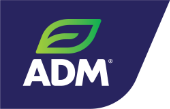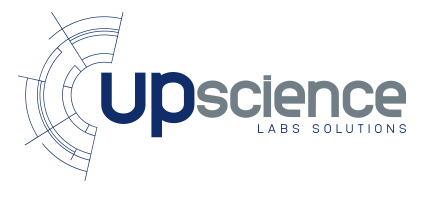Table of content
- Why is it important ?
- Types of contaminants
- Heavy metal issues
- Heavy metals in food regulation
- How Upscience can help you?
Why is it important ?
Contaminated feed or food can contain substances not purposefully added to foods. These products, when intended for humans or animals, can be a significant risk to health and well-being. The impact of heavy metal contamination can be diverse and ranges from illness, delayed growth, issues with reproduction, and even death.
Types of contaminants
The most common heavy metal parameters are mercury, aluminum, lead, arsenic, cadmium, antimony, barium, and bismuth.
Contaminants can be found in many different types of food or feedstuffs and may vary in type and classification. Examples of environmental contaminants are molecules like chlorinated pesticides or polychlorinated biphenyls (PCBs). These substances are man-made and synthetic. They can be found in air, water or soil. The presence of heavy metals contamination is usually due to an introduction through the environment as well. Heavy metals can appear as residues in feed and foodstuffs. Their presence in these cases usually results from human activities such as agriculture, industry, or following contamination during storage or processing.
Heavy metal issues
Of particular concern for the aquaculture industry is the ability to test for specific heavy metals (cadmium, total mercury and lead), which are present in certain fish and seafood. Experts have noted that mercury in fish is the contamination most identified in the notifications of the health alert network European RASFF.
Another type of heavy metal contamination to note is cadmium. This metal is carcinogenic, mutagenic and toxic for reproduction. It enters growing plants through the root system, typically through the use of fertilizers and other inputs. National Agency for Food, Environmental and Occupational Safety (ANSES) has published a recommendation on limiting the amount of cadmium used in these types of applications to limit exposure in consumed crops or those used in livestock feed ingredients, similar to other guidance and regulation placed on additional heavy metals.
A recent news release by ANSES (July 2020), noted an evolving concern for cadmium contamination by highlighting that nearly a quarter of edible seaweed samples analysed recently had cadmium concentrations above the maximum level of 0.5 milligram per kilogram set by the French High Council for Public Health (CSHPF). Because of the toxic nature of cadmium, and because the consumption of foods (such as seaweed and algae based products) that tend to be high in this contaminant is increasing, the Agency was asked by the Directorate General for Competition, Consumer Affairs and Fraud Control to recommend maximum cadmium levels for seaweed intended for human consumption. The consumption of these seaweed products is cumulative with other products that may contain cadmium and are already in consumer’s diets; the recommendation was that maximum concentrations of this metal in edible seaweed be set as low as possible to avoid the population being overexposed to cadmium through its consumption.
The variety of other heavy metals that can be found as contaminants in food and feed are equally as harmful, which is why strict testing and regulations have been put in place to identify and detect the presence of these contaminating compounds.
Heavy metals in food regulation
The accumulation of heavy metals in an organism represents a high risk to health. This health risk with heavy metal could result from two situations:
- Exposure to a high dose (acute toxicity)
- Long-term exposure to lower doses (accumulation in the tissues and chronic toxicity)
The Directorate-General for Competition, Consumer Affairs and Fraud Control runs annual tests and assessments to help control the exposure risk to heavy metals contamination for consumers. In addition, a vast amount of regulations and rules are in place to keep these contaminants out of the feed and food system. Regulation EC 1881/2006 sets maximum levels for certain contaminants in foodstuffs, in particular for lead, cadmium, mercury and inorganic tin. Monitoring of residues of chemical elements in food of animal origin is set out in Directive 96/23 / EC. Monitoring these levels of contaminants ensures levels that fall within certain thresholds. In Annex I of EU Directive 2002/32 / EC maximum levels of undesirable substances in animal feed are specified and they are updated on the basis of individual assessments by EFSA. Animal feed containing amounts of undesirable substances above the maximum levels can be dangerous and should be removed from the food chain.
The European legislation on undesirable substances in animal feed was developed to ensure that animal feeds are only put into the market if they are “sound, genuine and of merchantable quality and, when correctly used, do not represent any danger to human health, animal health or the environment or do not adversely affect livestock production.”
How Upscience can help you ?
With the regulation and strict laws in place around heavy metal contamination, testing is essential to confirm that ingredients and products fall within the acceptable limits laid out by governing bodies. Upscience offers to detect and quantify heavy metals in pet food and feed, and all other foodstuff products through Mass Spectrometry (ICP-MS).
Upscience is an international network of laboratories specialized in physio-chemical analyses, microbiology and molecular biology. We offer an extensive and innovative range of analyses and services for food, feed, pet food, nutraceuticals and environmental stakeholders.
Upscience’s network is made of 3 laboratories in France and Vietnam in order to support the local and international development of our customers. Our laboratories are equipped with state-of-the-art technologies and benefit from a strong R&D organization. They offer standardized solution or develop custom analyses and services, depending on your needs. Check out their analytical offer for more information.

